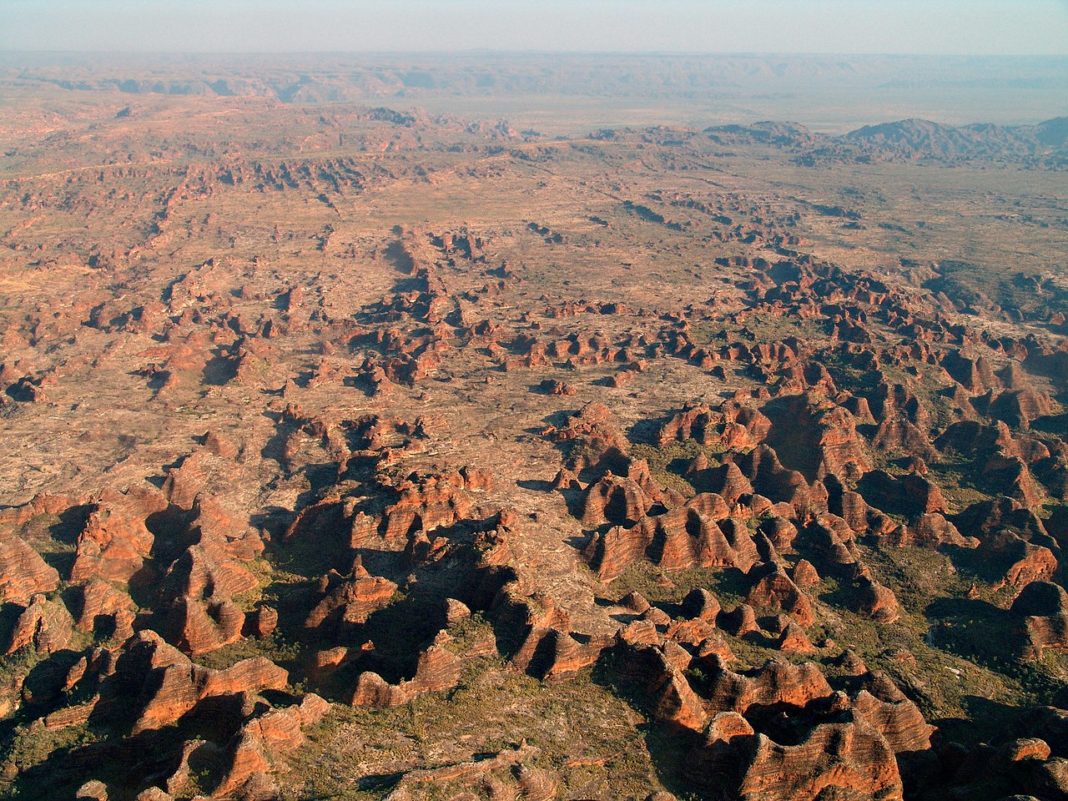The Purnululu National Park is a World Heritage Site in the East Kimberley region of Western Australia. The 239,723-hectare national park is located approximately 300 kilometers south of Kununurra, with Halls Creek located to the south. The park was declared a World Heritage Site in 2003.
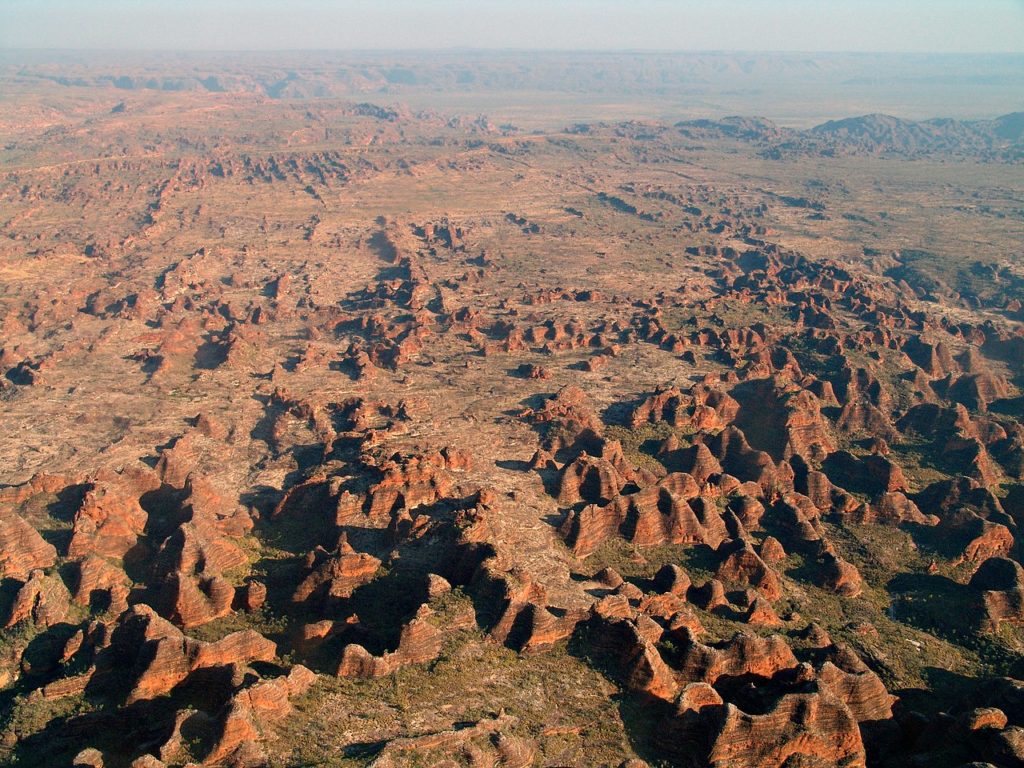
The Bungle Bungle range represents the heart of the park. The Bungle Bungle Range, lying fully within the park, has elevations as high as 578 meters above sea level. It is famous for its sandstone domes, unusual and visually striking with their striping in alternating orange and grey bands. The banding of the domes is due to differences in clay content and porosity of the sandstone layers: the orange bands consist of oxidized iron compounds in layers that dry out too quickly for cyanobacteria to multiply; the grey bands are composed of cyanobacteria growing on the surface of layers of sandstone where moisture accumulates.
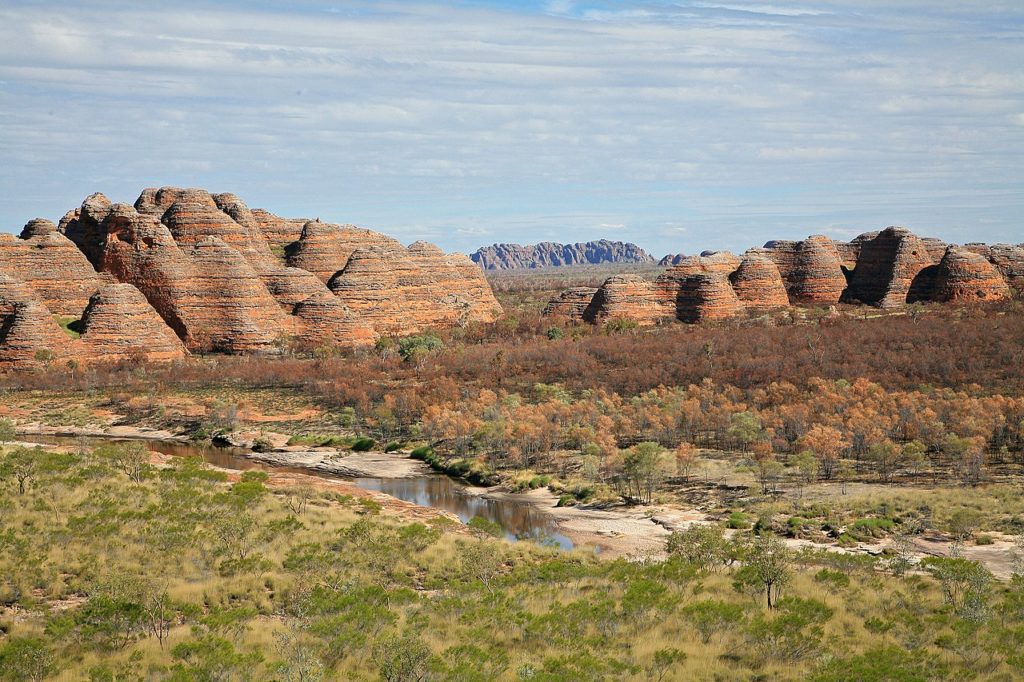
The Bungle Bungle Range is one of the most extensive and impressive occurrences of sandstone tower (or cone) karst terrain in the world. The Bungle Bungles were a plateau of Devonian sandstone, carved into a mass of beehive-shaped towers with regularly alternating, dark gray bands of cyanobacteria crust (single-cell photosynthetic organisms). The plateau is dissected by 100–200-meter deep, sheer-sided gorges and slot canyons. The cone towers are steep-sided, with an abrupt break of slope at the base, and have domed summits. How they were formed is not yet completely understood. Their surface is fragile but stabilized by crusts of iron oxide and bacteria. They provide an outstanding example of land formation by dissolution weathering of sandstone, with the removal of sand grains by wind, rain, and sheet wash on slopes.
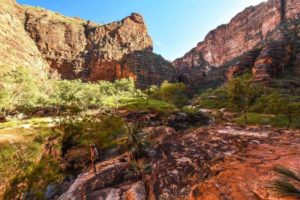
The park is not known for wildlife, however, there are 149 species of birds calling the park home. Reptiles are plentiful with monitors, dragons, goannas, lizards, and skinks as some of the highlights from the 81 species.
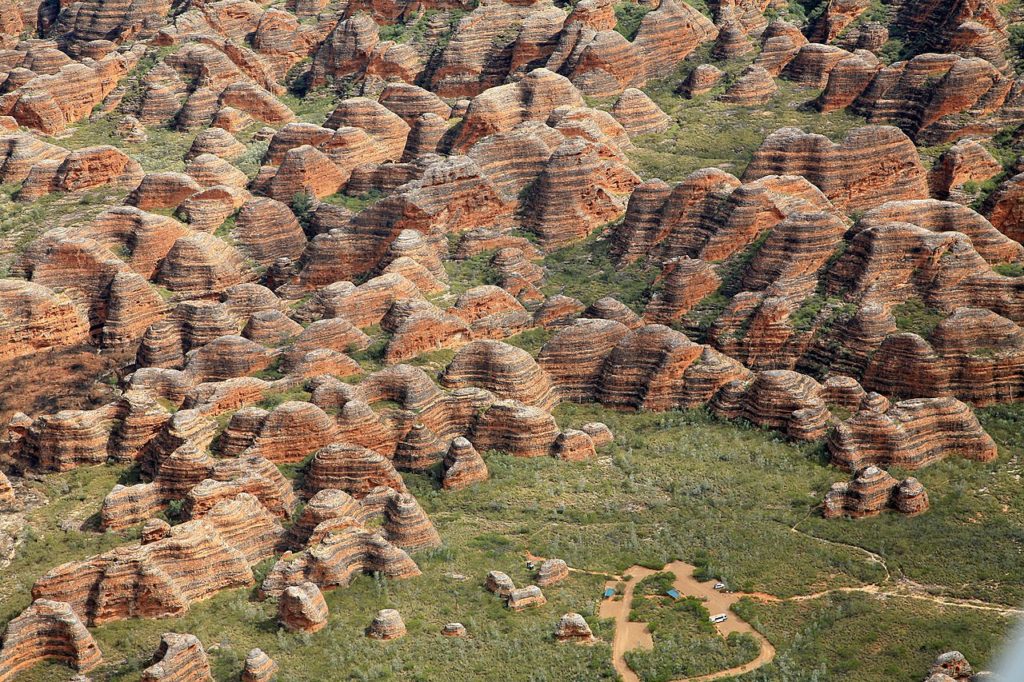
According to Wikipedia





